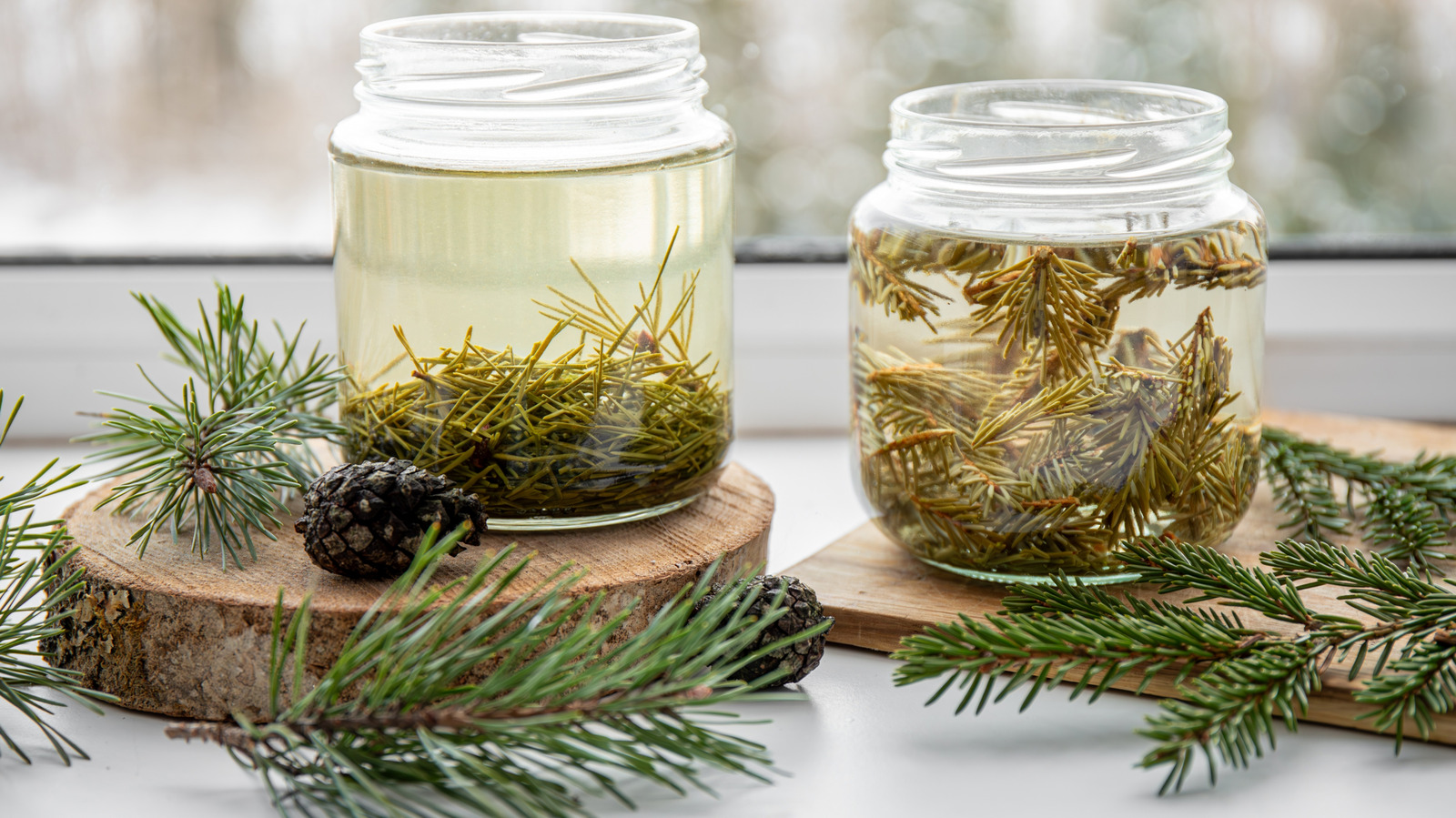The fresh scent of pine needles is undoubtedly alluring, and it may have you wondering whether these pointy green strands are edible. The short answer is generally yes, they’re edible — if you use pine nuts in pestos and beyond, you’re already eating part of a pine tree. However, there are some caveats. For example, certain pine species may be toxic, and you wouldn’t want to chow down on a whole meal of them as they can be tough to digest. However, they can also provide important vitamins — they contain vitamins A and C, as well as flavonoids, an anti-inflammatory compound that also helps your immune system.
Let’s start with what not to do: You should avoid the needles of similar-looking yew trees as they are toxic. You can recognize the trees thanks to the flat shape of their needles and clusters of red berries, but it would be wise to look up more detailed information and pictures from reliable foraging websites or a guidebook to make sure you’re familiar with them and know what to look for. Once you’re sure you have a safe-to-eat pine tree in your sights, you’ll want to go for bright green needles with a nice pine scent. Dried ones won’t taste great, whereas brown or yellow ones indicate spoilage or are signs of a diseased tree. If you’re foraging, try not to take more than about one-fifth of a tree’s needles so that it can continue to grow properly. You can store the needles for up to two weeks before using them, as long as you refrigerate them in a container that allows for some airflow.
What to do with pine needles
Realistically, you’ll end up drinking pine needles rather than eating them, as they often get infused into drinks or syrups. Pine tea is one popular use — the vitamins are good for your health, and indigenous cultures have used this tea to help against coughs and fever through history. This is a simple preparation: Just rinse the needles and chop them up a bit so they can release their nutrients. Simmer them in boiling water for 20 minutes or so, and then strain them; you can add honey or lemon to the tea if you like. The tea should have a distinct flavor of pine with notes of citrus.
Pine needles tend to infuse well in other settings, too. You can make pine gin for a unique cocktail by putting the needles in the liquor and leaving them to infuse for a couple of months. Or, you can apply the same method and use pine needles as a cheap trick to level up mediocre vodka as well. You can also boil them with equal parts of sugar and water (add vanilla for an extra twist) to make a simple syrup for cocktails or sodas that are a bit like spruce beer.
If chopped up finely to avoid that toughness, pine needles can work in some foods as well. They can give a herbal kick to savory, meaty dishes (including game), or work them into a cookie dough (shortbread is one idea) for a Christmassy flavor.





